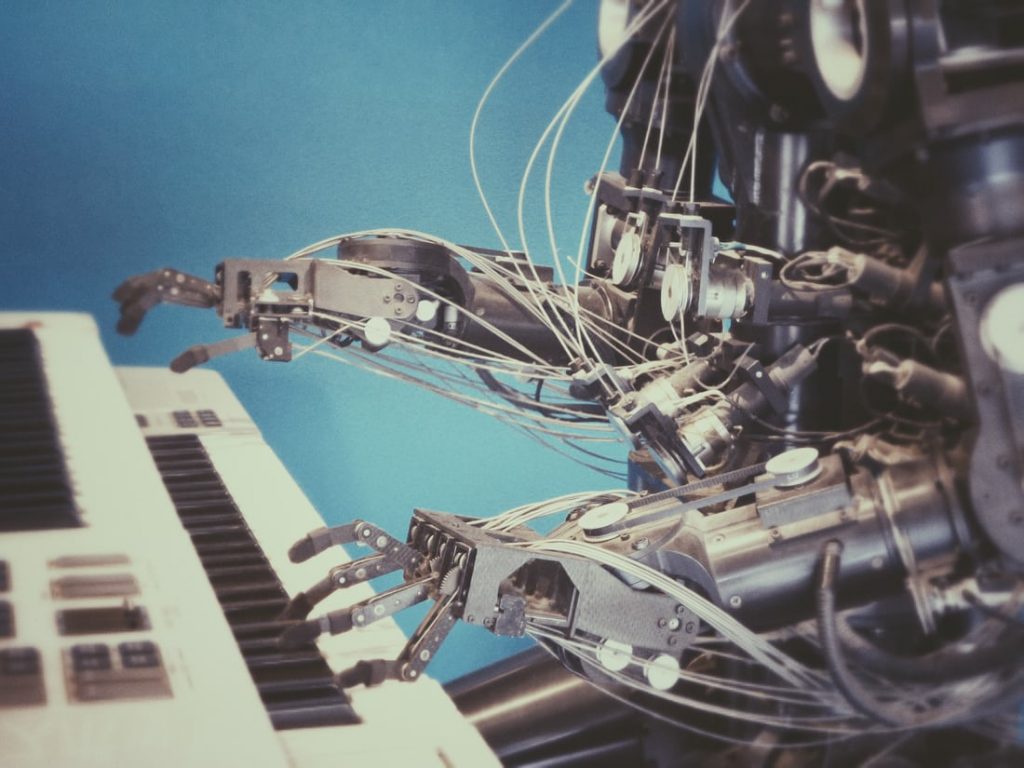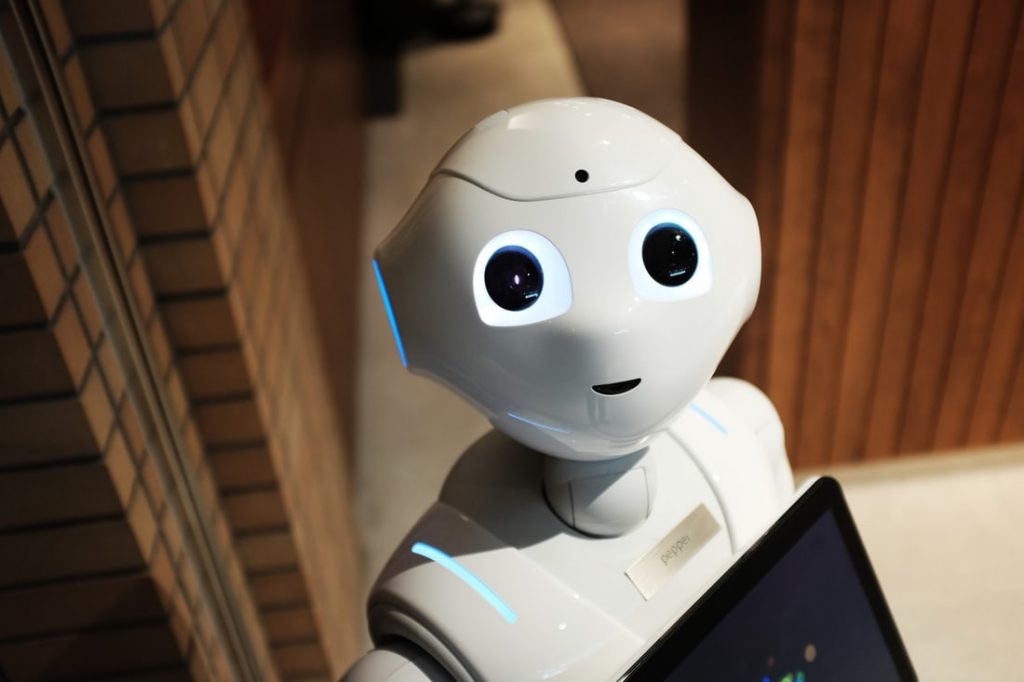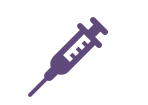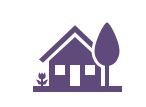Choose Language
May 25, 2020
FocusThe Post Covid Reality
They say that necessity is the mother of invention. The Coronavirus emergency has set the stage for human ingenuity and innovation, while accelerating structural shifts that had already been long at play: Primarily towards sustainability and digitalisation. Once the dust settles on this tragic episode, heat-of-the-moment measures adopted through necessity will likely stay ingrained in our lifestyles, while at the same time, we will be left with an important souvenir: A reminder about the vulnerability of humanity, especially in front of climate change. An understanding of tomorrow’s world can help investors make informed, strategic investment choices. In this article, we outline some of the resounding themes emerging from the pandemic.
V
I R T U A L R E A L I T Y


Talk
of virtual reality has long been in the ether, but its application in our every
daily lives beyond videogame headsets that leave you circling the room jousting
invisible enemies has been limited, even if the technology is already there.
Back in 2016, Microsoft took its first leap into the realm of mixed reality with HoloLens, a smart-glasses headset that enabled the wearer to view and interact with anchored virtual objects and displays. Today, software additions to HoloLens, such as Dynamics 365 Remote Assist are enabling cross-distance collaboration, allowing the wearers to see the same live view and solve problems in real-time [1]. Previously, such technology was leveraged for things like field service repairs (e.g. sharing a live view of a problem with an engineer who could directly annotate the experience to provide an expert opinion) or training. As the pandemic intensified, remote assist scenarios have been extended to emergencies in far-flung locations where medical experts are not readily available. As another example, medical equipment may need crucial maintenance quickly, inside a hospital full of infected patients. With virtual reality, personnel can quickly assist in repairs using remote assist technology. A company called Delta Cygni Labs is doing exactly this via a phone application called “POINTR’. Through POINTR, an expert anywhere in the world can see the problem and visualize the solution directly to the video or screenshot. In January the company had approximately 50-100 downloads and now there are over a thousand downloads per week. [2] It’s therefore not a stretch to imagine that we could soon be consulting experts on problems within our homes in the same way, for example with a boiler, in case there is a quick fix before a call-out.
But
virtual reality goes beyond repairs. Companies can use the technology to
showcase their products in 3D, or to demonstrate products/ buildings that do
not exist yet (in photorealistic quality).
This year, several high-profile trade events across the globe had to be cancelled, for example, the Mobile World Congress, an annual trade event held in Barcelona which attracts more than 100,000 people. By March 2020, HTC, a virtual reality headset maker had organized an event, based completely on virtual reality technology. It drew 2,000 registrants from more than 55 countries, marking the first physical industry event that was fully replaced by virtual reality.
More companies may follow suit, with e-conferences that reduce costs and carbon emissions (especially from international travel) as well as the need to congregate in closed spaces. In doing so, they can create and demonstrate virtual prototypes which can be more easily edited and tailored to client needs before resource-intensive physical production begins.
E – L E A R N I N G


Online education was already gathering pace before the pandemic.
Language learning apps such as Babbel and Duolingo were considered legitimate
tools for leaning a language (according to an independent study conducted by
the City University of New York and the University of South
Carolina, 34 hours of Duolingo are equivalent to a
full university semester of language education). At the same time,
platforms such as Coursera, were democratizing education, making entire courses
from renowned institutions, such as Harvard and Yale, available to everyone,
for free, online. However, education has been pushed even further into the
digital realm by the pandemic.
By the middle of April, almost 200 countries had announced school or university closures, affecting roughly 1.6 billion students. Many educational institutions started offering courses online to ensure education was not disrupted by quarantine measures. Some had to rapidly build technology to ensure continuity and it is unlikely that such technology is simply disregarded in the future.
The governor of New York, Andrew Cuomo, announced a partnership with the Bill and Melinda Gates Foundation to develop “a smarter education system”. He called Bill Gates “a visionary” whose “thoughts on technology and education should be advanced”, commenting “… all these buildings, all these physical classrooms – why, with all the technology you have?”. It’s yet to be seen what the partnership will produce but what we do know is that no city trends harder than New York and what happens there, usually gets regurgitated elsewhere.


The crisis has given momentum to start-ups in the “edtech” sector in fields such as virtual and/or augmented reality, 3D printing and artificial-intelligence-enabled robot teachers. Of course, if online learning was to become a mainstay in our societies, authorities would have to ensure that children from lower-income households have the resources required to participate, which would bring fiscal flows to the sector. [3]
3 D P R I N T I N G


The pandemic has
been a boon for 3D printing, with “citizen
supply chains” forming across the Western world. To mitigate supply chain
shocks for essential medical equipment, members of the public and institutions
with 3D printers, have been mobilised and are manufacturing it at home.
Here in Luxembourg, citizens, secondary schools and businesses have made 750 3D printers available for producing healthcare supplies. ArcelorMittal developed a 3D-printed ventilator prototype and now it is working on a second that would not only provide oxygen to the lungs but engage artificial intelligence algorithms to feed medicine to the patient.
In the UK, a team at the University of Sheffield called iForge has made 600 face shields for healthcare workers using 3D-printed frames, while an Italian firm called Isinnova hit the headlines when it announced it had 3D-printed ventilator tubes for a hospital in Brescia.
The pandemic has highlighted the benefits of 3D printing such as flexibility in production (the same printer can produce various products based on different design files and materials), their ability to tackle supply chain bottlenecks (simple parts can be made onsite quickly without requiring a lengthy procurement process) and low costs after initial spending on the equipment. Once issues such as copyright law and safety standards are ironed out, it is imaginable that 3D printing becomes more prevalent in our daily lives. Imagine you could immediately print the tiny IKEA screw that has gone missing but without which your chest of drawers has only three legs!
R O B O T I C S


Already, robots have made their way into some work places, but there has been no widespread switch from man to machine. Coronavirus, and the resultant need for social distancing, may indeed be a catalyst for further automation. Amid the pandemic, hospitals have deployed robots to sterilise rooms and deliver supplies, while supermarkets in the US are using robots to clean the aisles. If the onshoring that many are now contemplating ensues, we can expect that a lot of the processes brought back will be automated in some shape or form.


T E L E H E A L T H


Telehealth was
gaining momentum before the pandemic, with Google search data being used to
track various potential outbreaks. There are mounting success stories from
around the globe: In South Africa, for example, two-thirds of pregnant women have
access to maternal healthcare and education services via a messaging service
which runs partly on artificial intelligence, using an algorithm that suggests
responses to frequently asked questions for staff to approve or correct. The
app is mutually beneficial as it makes essential prenatal care available to
women in rural locations and allows others to avoid long waiting times, while
the government can amass vast amounts of data in that it can better target
policy responses and assess risks. A similar Covid-19 messaging platform based
on the same technology has now been rolled out in the country and has more than
2 million users.
In Brazil, an online diagnostic platform called
Portal Telemedicina, connects primary healthcare workers (especially in
far-flung locations) and specialists. Using artificial intelligence and
algorithms, it conducts probabilistic matching of the patient across different
databases, amassing data which gives the specialist a 360-degree holistic view
of the patient.
Telehealth has emerged as an effective tool in tackling the spread of coronavirus (for example, in Asian countries, phone apps enabled contact tracing) while providing essential primary care. The highly contagious nature of the disease means that healthcare workers have been putting themselves in danger to help patients, while hospitals risk becoming hot spots for transmission. Chatbots can diagnose patients without risking contamination while wearable devices can detect vital signs.
Governer Cuomo,
announced a second collaboration, with Google CEO Eric Schmidt, to
reimagine New York state’s post-Covid reality, with an emphasis on permanently
integrating technology into every aspect of civic life. Schmidt said that
telehealth would be one of the first priorities.
Globally, we could indeed see a proliferation of tech-assisted medicine in the future, while mobile phones could become our medical records that pick up on existing and new health indicators: where we move, our temperature, our pulse, the symptoms we Google…
O N L I N E C O N S U M P T I O N


Jack Ma, the founder of Alibaba once said: "In
America, e-commerce is dessert. In China, it is the main course." The
coronavirus pandemic has accelerated the switch to online shopping, through
necessity (a trend that spells more bad news for struggling brick and mortar
stores). Amazon, for example, has experienced what Brian Olsavsky, its finance
chief, recently described as “unprecedented demand”.
However, with the virus still at large, the entire
logistics system of e-retailers must be well thought out. This is giving rise
to contactless delivery services, for example using drones, robotics or
arrangements whereby products are left at designated locations.
In the US and Europe, no company is better poised than Amazon to rise to the challenges of creating a “vaccinated supply chain” whereby each point of contact is designed to avoid contamination. But beyond virus-proofing its own operations, Amazon also has the scale and distribution network to become a key provider of testing. As writes Scott Galloway [4]:
‘it’s possible the largest new consumer category in history is testing for Covid-19 virus and immunities and Amazon may become the market share leader in this category.’
It is not only e-shopping for physical goods that has grown in scope - the consumption of services has also moved into cyber space. Online entertainment has become even more pertinent. Amid mass lockdowns, people have moved from pubs to PlayStation online; “Fortnite” (a videogame) is now more frequently searched on Google than “football”! There is a whole plethora of online courses available now, from meditation, to pilates, to yoga. Certain museums and galleries have even moved collections online whereby you can take virtual tours from the comfort of your own home. All this adds a new dimension of convenience which is likely to still be appreciated after Covid fades away.
W O R K I N G F R O M H O M E


Some
firms had already embraced tele-working and the advantages it brings such as
access to a global talent pool, reduced time spent commuting, reduced costs on
large office spaces and the freedom to work when one feels most productive,
however, some had dilly-dallied with regard to implementing home working
solutions. These companies were suddenly compelled by the pandemic to roll-out
teleworking hastily.
Remote working leverages technologies such as virtual private networks (VPNs), online conferencing tools (Zoom and Webex, for example), voice over internet protocols (VoIPs) and even facial recognition technologies that enable a person to appear before a virtual background to preserve the privacy of their home.
With economic activity having dropped like a stone, chief executives need to find ways to cut costs and leaning up property portfolios could be a good place to start. Here in Luxembourg, a petition calling for reform to Luxembourg's employment law to make remote working a right has reached the 4,500 signature threshold that requires the question to be debated publicly in the Chamber of Deputies. The petition calls for employees to be able to work from home for half their daily or weekly working hours as determined by their contract.
Ultimately, less commuting would have beneficial side effects for the planet, reducing carbon emmissions and fossil fuel usage.
…
The key result of coronavirus is that the digitalization of our lives has been re-branded and fast-forwarded. As the author Naomi Klein writes [5], previously, the future was being sold to us in the name of friction-free convenience and personalization. Now, it is being sold to us as the only possible way to pandemic-proof our lives. But, as Noah Yuval Harari comments [6], many short-term emergency measures will become a fixture of life. That is the nature of emergencies. They fast-forward historical processes.
If
all the technologies mentioned in this piece are to become mainstream, we first
need a fully-connected population. That’s where the core technologies of the 4th
industrial revolution will play a role: 5G networks, blockchain, big data, the
internet of things and robust cloud-based infrastructures. Such areas are
expected to receive government inflows in major economies (if not already). It
is expected there will be more pressure on governments to embrace
public-private partnerships to further develop technological trends – as has
already been seen in China.
As technology seeps into more areas of our lives, our homes could begin to serve as our schools, our gyms, our doctor’s offices, our workplaces.
If digitalisation has been fast-forwarded, pollution and carbon emissions were sent into slow motion during the global lockdown. Rivers ran clear and smog cleared from some of the world's most polluted cities. With scientists pointing out that viruses such as Covid-19 could ultimately be the result of deforestation [7] (because of logging, mining, road building through remote places, rapid urbanisation and population growth) bringing people into closer contact with wild animals which harbour pathogens, companies will be under more pressure to examine their relationship with the natural world.
Great change brings many great opportunities for an array of companies in all kinds of sectors. What is certain is that those firms that don’t go with the flow of digitalization will struggle to stay relevant. Beyond coronavirus, climate change will become the next big challenge that fosters a wave of innovation and human problem-solving. A shift towards ESG-investment criteria will likely put pressure on those companies failing on the sustainability front, and reward those who are flourishing.
IMPORTANT DISCLAIMER: This article mentions various companies simply to illustrate some of the new technologies emerging, for information purposes only. In no way should any examples in this article be taken as an investment recommendation.
References:
- https://dynamics.microsoft.com/en-us/mixed-reality/remote-assist/
- https://businesstampere.com/remotely-maintaining-medical-equipment-and-virtual-reality-meetings-expertise-in-tampere-helps-with-the-situation-caused-by-coronavirus/
- https://www.nytimes.com/2020/02/20/education/learning/education-technology.html
- https://www.profgalloway.com/the-fourth-great-unlock
- https://www.theguardian.com/news/2020/may/13/naomi-klein-how-big-tech-plans-to-profit-from-coronavirus-pandemic
- https://www.ft.com/content/19d90308-6858-11ea-a3c9-1fe6fedcca75
- https://www.unenvironment.org/news-and-stories/story/six-nature-facts-related-coronaviruses
Disclaimer
All financial data and/or economic information released by this Publication (the “Publication”); (the “Data” or the “Financial data
and/or economic information”), are provided for information purposes only,
without warranty of any kind, including without limitation the warranties of merchantability, fitness for a particular
purpose or warranties and non-infringement of any patent, intellectual property or proprietary rights of any party, and
are not intended for trading purposes. Banque Internationale à Luxembourg SA (the “Bank”) does not guarantee expressly or
impliedly, the sequence, accuracy, adequacy, legality, completeness, reliability, usefulness or timeless of any Data.
All Financial data and/or economic information provided may be delayed or may contain errors or be incomplete.
This disclaimer applies to both isolated and aggregate uses of the Data. All Data is provided on an “as is” basis. None of
the Financial data and/or economic information contained on this Publication constitutes a solicitation, offer, opinion, or
recommendation, a guarantee of results, nor a solicitation by the Bank of an offer to buy or sell any security, products and
services mentioned into it or to make investments. Moreover, none of the Financial data and/or economic information contained on
this Publication provides legal, tax accounting, financial or investment advice or services regarding the profitability or
suitability of any security or investment. This Publication has not been prepared with the aim to take an investor’s particular investment objectives,
financial position or needs into account. It is up to the investor himself to consider whether the Data contained herein this
Publication is appropriate to his needs, financial position and objectives or to seek professional independent advice before making
an investment decision based upon the Data. No investment decision whatsoever may result from solely reading this document. In order
to read and understand the Financial data and/or economic information included in this document, you will need to have knowledge and
experience of financial markets. If this is not the case, please contact your relationship manager. This Publication is prepared by
the Bank and is based on data available to the public and upon information from sources believed to be reliable and accurate, taken from
stock exchanges and third parties. The Bank, including its parent,- subsidiary or affiliate entities, agents, directors, officers,
employees, representatives or suppliers, shall not, directly or indirectly, be liable, in any way, for any: inaccuracies or errors
in or omissions from the Financial data and/or economic information, including but not limited to financial data regardless of the
cause of such or for any investment decision made, action taken, or action not taken of whatever nature in reliance upon any Data
provided herein, nor for any loss or damage, direct or indirect, special or consequential, arising from any use of this Publication
or of its content. This Publication is only valid at the moment of its editing, unless otherwise specified. All Financial data and/or
economic information contained herein can also quickly become out-of- date. All Data is subject to change without notice and may not be
incorporated in any new version of this Publication. The Bank has no obligation to update this Publication upon the availability of new data,
the occurrence of new events and/or other evolutions. Before making an investment decision, the investor must read carefully the terms and
conditions of the documentation relating to the specific products or services. Past performance is no guarantee of future performance.
Products or services described in this Publication may not be available in all countries and may be subject to restrictions in some persons
or in some countries. No part of this Publication may be reproduced, distributed, modified, linked to or used for any public or commercial
purpose without the prior written consent of the Bank. In any case, all Financial data and/or economic information provided on this Publication
are not intended for use by, or distribution to, any person or entity in any jurisdiction or country where such use or distribution would be
contrary to law and/or regulation. If you have obtained this Publication from a source other than the Bank website, be aware that electronic
documentation can be altered subsequent to original distribution.
As economic conditions are subject to change, the information and opinions presented in this outlook are current only as of the date
indicated in the matrix or the publication date. This publication is based on data available to the public and upon information that is
considered as reliable. Even if particular attention has been paid to its content, no guarantee, warranty or representation is given to the
accuracy or completeness thereof. Banque Internationale à Luxembourg cannot be held liable or responsible with respect to the information
expressed herein. This document has been prepared only for information purposes and does not constitute an offer or invitation to make investments.
It is up to investors themselves to consider whether the information contained herein is appropriate to their needs and objectives or to seek advice
before making an investment decision based upon this information. Banque Internationale à Luxembourg accepts no liability whatsoever for any investment
decisions of whatever nature by the user of this publication, which are in any way based on this publication, nor for any loss or damage arising
from any use of this publication or its content. This publication, prepared by Banque Internationale à Luxembourg (BIL), may not be copied or
duplicated in any form whatsoever or redistributed without the prior written consent of BIL 69, route d’Esch ı L-2953 Luxembourg ı
RCS Luxembourg B-6307 ı Tel. +352 4590 6699 ı www.bil.com.
Read more
More
January 10, 2025
NewsVideo summary of our Outlook 2025
2024 - The US economy exhibited impressive strength powered by consumption, while Europe struggled with weak demand and a protracted manufacturing downturn 2025 - The...
December 27, 2024
NewsBIL Investment Outlook 2025 – T...
Introduction from our Group Chief Investment Officer, Lionel De Broux As the oldest private bank in Luxembourg, we’ve been managing clients’...
December 20, 2024
Weekly InsightsWeekly Investment Insights
Having spent ten straight days decked out in red, the Dow Jones Industrial Average index recorded is longest losing streak since 1974. Other global...
December 13, 2024
Weekly InsightsWeekly Investment Insights
It has been a big week for France, with Notre Dame finally reopening after five years of reconstruction, and Francois Bayrou being named France’s...
December 9, 2024
Weekly InsightsWeekly Investment Insights
December is here, and while the cold, dark days may not be everyone's cup of cocoa, the festive spirit is starting to set in....

